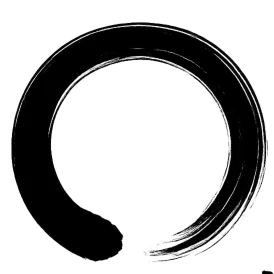How expanding your mental horizons creates authentic direction and effortless momentum
There's a profound difference between pushing through life and flowing through it. The difference isn't luck, circumstance, or even talent. It's alignment. When you're truly aligned with your deepest values, vision, and purpose, decisions become clear, energy flows naturally, and obstacles transform from roadblocks into stepping stones. But here's what most people miss: achieving real alignment requires expanding your mental horizons about what's actually possible.
The Cage We Don't See
Most of us operate within invisible boundaries—beliefs about what we should do, what's realistic, what others expect, or what we think we deserve. These limitations masquerade as practical wisdom, but they're often just internalized fears and conditioning. I recently worked with a CTO who, when asked to describe his perfect day, immediately said, "I'd have to make sure my partner was happy first." What seemed like considerate prioritizing revealed something deeper: he felt that his own desires were inherently selfish, that he was responsible for everyone else's emotional state, and that choosing his own path meant inevitable guilt and relationship failure.
His initial response wasn't wrong—relationships and care for others are genuine values. But buried underneath was a limiting belief system that made his perfect day feel like another set of obligations rather than an expression of authentic joy. Until we expanded his sense of what was possible, he couldn't even conceive of a vision where both his fulfillment and his relationships could thrive simultaneously.
Expanding the Search Space
Personal growth isn't just about improving who you are—it's about expanding your mental search space for who you could become. Think of it like a GPS that can only route through certain streets because it doesn't know other roads exist. Your brain naturally seeks paths within familiar territories, recycling the same solutions, the same concerns, the same limitations. Real transformation happens when you push these mental boundaries and allow your mind to perceive new paths of action.
This is why traditional goal-setting often fails. When you ask someone operating from a constrained mindset to set bigger goals, they just create more elaborate versions of their existing limitations. Instead of dreaming bigger, they plan harder. Instead of aligning with their authentic desires, they optimize their coping strategies.
The Two-Stage Vision Process
True alignment emerges through a process I call "seeing the cage and the sky." First, we explore what you think you want without any filters—complete with all your shoulds, musts, and practical constraints. This reveals the invisible cage of limiting beliefs. Then, we expand the mental horizons: What would you choose if guilt wasn't a factor? If others' approval wasn't needed? If failure taught instead of punished?
This isn't about ignoring reality or abandoning responsibility. It's about distinguishing between genuine values and unconscious limitations. When that CTO realized he could prioritize his own fulfillment AND nurture his relationship—that these weren't mutually exclusive—his entire energy shifted. Suddenly, self-care became a gift to his partner rather than a betrayal. Purpose-driven choices replaced guilt-driven obligations.
When Alignment Creates Flow
True alignment happens when your deepest values, expanded vision, and daily actions converge. You know you've found it when:
Decisions become effortless because they're filtered through clear criteria rather than endless deliberation. You're not trying to figure out what you should want—you know what matters to you.
Energy flows naturally because you're moving toward something meaningful rather than away from something fearful. Motivation becomes intrinsic rather than forced.
Obstacles become information rather than evidence of failure. When you're aligned with your authentic path, setbacks inform your approach rather than derailing your direction.
Relationships improve because you're showing up as your real self rather than who you think others need you to be. Authenticity creates deeper connections than people-pleasing ever could.
The Practice of Expanding Possibilities
Alignment isn't a destination—it's a practice of continuously expanding what you believe is possible while staying connected to what genuinely matters to you. This requires regular examination of your mental boundaries: What are you assuming is impossible that might just be unfamiliar? What feels selfish that might actually be necessary? What seems too good to be true that might be exactly what's needed?
For tech leaders especially, this practice is crucial. The same analytical mind that excels at optimizing systems can trap you in optimizing limitations rather than questioning assumptions. The courage to expand your mental search space—to consider radically different ways of leading, living, and being—often reveals that the obstacles were never external constraints but internal boundaries.
The Ripple Effect of Authentic Alignment
When you operate from genuine alignment, the impact extends far beyond personal satisfaction. Teams sense when their leader is authentically engaged versus going through motions. Organizations benefit when decisions emerge from clear values rather than reactive fear. The people around you receive permission to explore their own alignment when they witness yours.
This is why alignment work isn't selfish—it's generative. When you know exactly why you're doing what you're doing, when your actions flow from expanded possibility rather than constrained obligation, you create space for others to discover the same freedom.
Your perfect day isn't a fantasy to be dismissed or a goal to be achieved—it's information about who you are when the artificial constraints are removed. The question isn't whether you deserve that vision, but whether you're willing to expand your beliefs about what's possible long enough to discover how alignment creates its own momentum.
Ready to explore what becomes possible when you expand your mental horizons? Sometimes the biggest breakthrough is simply realizing that the cage door was never locked.


